
Although grasses are very easy to care for, many types should be cut once a year. The main pruning times are in autumn and/or spring. Find out here which of the most popular grasses to cut in spring.
In a nutshell
- Cut mainly near the ground
- only cut in the spring
- old foliage serves as winter protection
- often only removal of dead stalks
- or complete pruning above the ground
Table of Contents
- Cut grasses in spring B-G
- By J-P
- From R-Z
- frequently asked Questions
Cut grasses in spring B-G
Rush (Juncus)
Evergreen rushes look very similar to traditional grass, are hardy and perennial. You should only cut them in spring when there is frost damage, dead or dried stems.
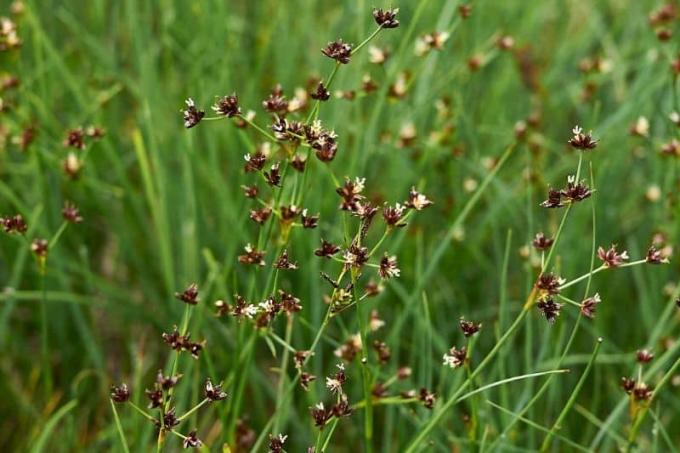
- Growth: upright, clumpy
- Growth height: between 20 and 200 centimeters depending on the variety
- Location: sunny to semi-shady; damp to wet
- Special features: very robust and persistent
Blue-green Iridescent Grass (Koeleria glauca)
This type of grass is one of the sweet grasses and is also known as "blue-grey chamber hairgrass". Only dead stalks and leaf tips should be removed in spring.
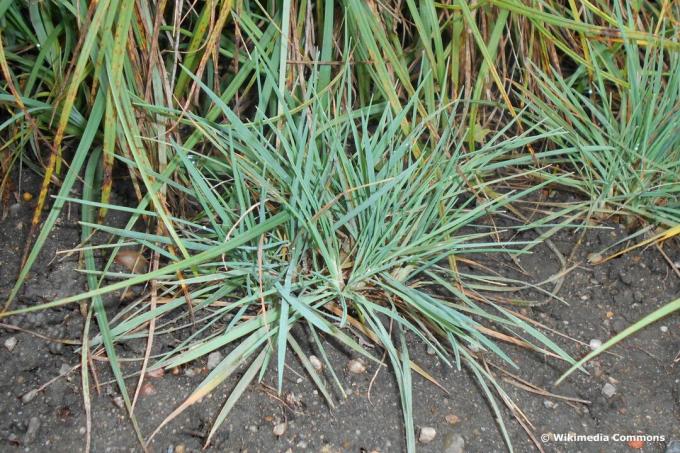
- Growth: dense, compact, clump-forming
- Growth height: 15 to 30 centimeters
- Location: sunny
- Special features: extremely hardy down to minus 34 degrees Celsius
Chinese reed (Miscanthus sinensis)
Chinese reed is one of the best-known grasses. When pruning in spring, you should cut it off completely in tufts near the ground.

- Growth: upright, clump-like, forming rhizomes, overhanging
- growth height: between 40 and 350 centimeters (depending on the variety)
- Location: sunny
- Special features: forms fronds; copes well with drought; ideal as a privacy screen
Tip: Chinese reed is often confused with elephant grass. A clear distinguishing feature is the rhizome formation, which you only find in Chinese reed.
Elephant Grass (Sorghum nigricans)
Elephant grass is cultivated outdoors, but also as a houseplant. Because it sprout relatively late, garden specimens close to the ground can be cut back until April. Important: No young shoots should be visible.
- Growth: upright, clumpy, dense, fast-growing
- Growth height: 300 to 400 centimeters
- Location: sun to semi-shade
- Particularities: Skin contact with sunlight can cause allergic skin reactions; ideal privacy protection
Golden ridge grass (Spartina pectinata)
The gold bar grass is ideal for a Planting of pond edges, over which the flowers and leaves bend slightly. This species should also be cut off in bunches above the ground in the spring, just like the elephant and China grasses.
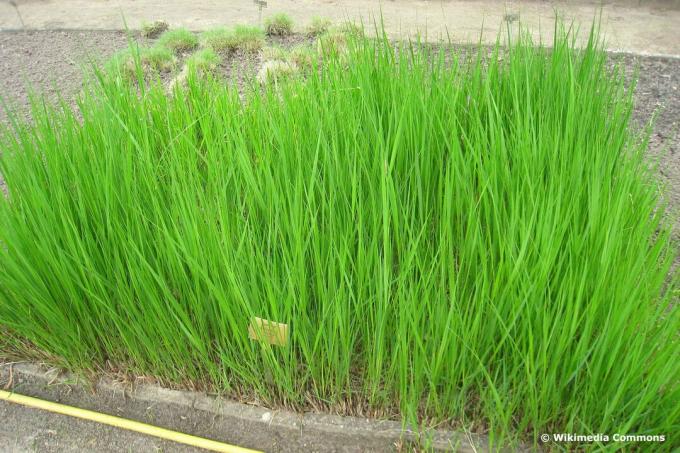
- Growth: sprawling, upright; overhanging; forming clumps and runners
- Growth height: 150 to 200 centimeters
- Location: sunny
- Special features: flowers from late summer; golden fall color
By J-P
Japanese dwarf reed (Hakonechloa macra)
As a rule, this sweet grass does not like extensive care "interventions", but you should still cut off the brown leaves just above the ground in the first third of the year.

- Habit: covering the ground, low-growing, sprawling, overhanging, forming clumps and runners
- Growth height: 30 to 50 centimeters
- Location: shady to semi-shady
- Special features: lime-tolerant to lime-sensitive; yellow-bronze autumn colour
Pennisetum grass (Pennisetum alopecuroides)
Pennisetum grass is a real eye-catcher in the perennial border with its feathery inflorescences. One will follow in the spring full pruning about a hand's breadth above the surface of the earth.
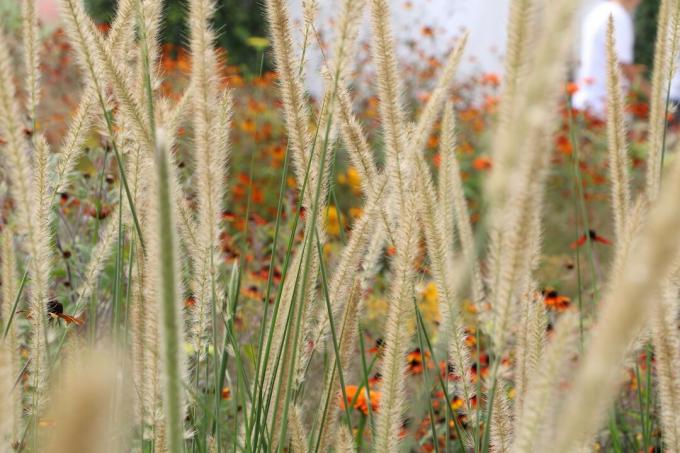
- Growth: overhanging, clump-forming
- Growth height: 30 to 150 centimeters
- Location: sunny to shady; moderately dry to fresh; sandy to loamy
- Special features: lime tolerant; flower colors available in white, pink, brown; autumn coloring
Mosquito grass (Bouteloua gracilis)
This is an unusual ornamental grass that impresses with its dragonfly-like flower spikes. It is one of the grasses that should definitely not be cut until spring so that no water can accumulate in the stalks.
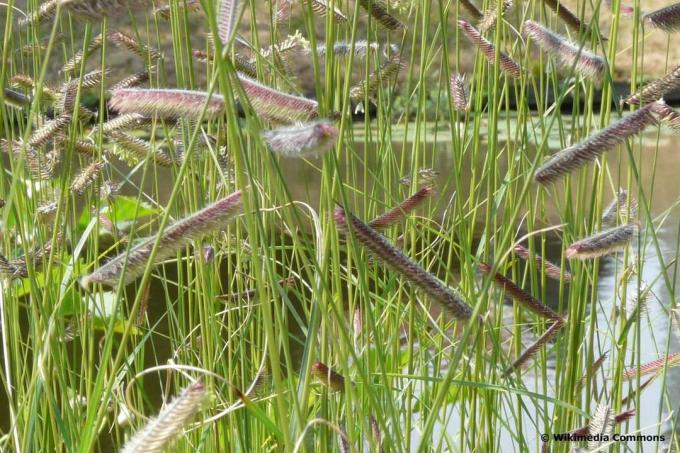
- Growth: upright, forming clumps
- Growth height: 20 to 40 centimeters
- location: sunny; dry to fresh; sandy to loamy
- Special features: hardy; ideal for rock gardens; sprouting late; pretty tough
Pampas grass (Cortaderia selloana)
One of the most popular grasses is the pampas grass. In spring, old stalks with infructescence and, if necessary, the entire tuft of leaves are removed near the ground.

- Growth: clump-forming, upright, slightly overhanging
- Growth height: between 80 and 250 centimeters
- location: sunny; sandy to loamy; moderately dry to fresh
- Special features: imposing appearance; lime tolerant; pompous frond growth, therefore often used as a decoration in vases
Moor-grass (Molinia caerulea)
The whistle grass, also known as bent grass, is very easy to care for and visually offers an elegant appearance. Every spring, a vigorous pruning of seed pods and last year's stalks is required.

- Growth: overhanging, clump-forming
- Growth height: 40 to 80 centimeters
- Location: sunny to semi-shady; fresh-moist
- Special features: green-violet flower spikes; lime tolerant
From R-Z
Giant reed (Arundo donax)
This heat-loving grass is often used as a privacy screen and is characterized in particular by the feathery panicles of flowers that are up to 70 centimeters long. In early spring you should cut the stalks about 20 centimeters above the ground.
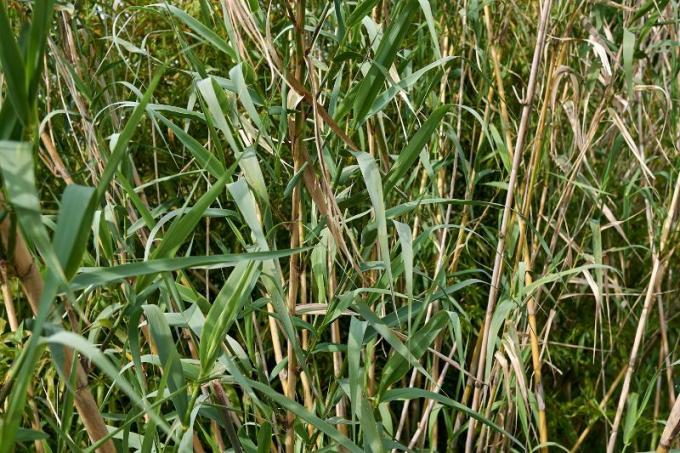
- Growth: upright, overhanging, forming clumps and rhizomes
- Growth height: 300 to 400 centimeters
- Location: full sun to sunny; fresh to moist; sandy to loamy
- Special features: also suitable for tubs; wintergreen
Switchgrass (Panicum virgatum)
Switchgrass is particularly popular among beginners because it is very easy to care for and demanding. The grass is cut back a hand's breadth above the ground in early spring.

- Growth: upright, forming clumps
- Growth height: 60 to 210 centimeters
- location: sunny; fresh to moderately moist; sandy to loamy
- Special features: bright golden yellow to copper-red autumn colours; lime tolerant
Sedges (Carex)
The sour grass plant includes over 2000 species. The spring cut consists only of cleaning out too densely grown and dried stalks.
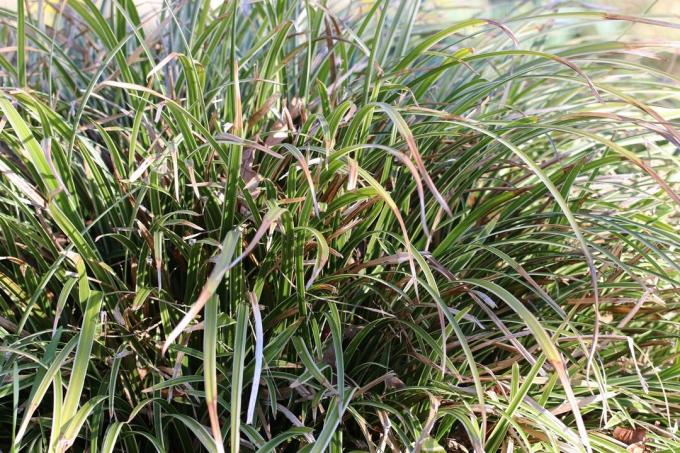
- Growth: clumpy, bushy and spreading
- Growth height: between 20 and 150 centimeters depending on the variety
- Location: sun, penumbra, shade; fresh moist soil
- Special features: very durable, adaptable and robust; wintergreen
A notice: In this country, the Japanese golden sedge (Carex oshimensis) and the giant sedge (Carex pendula) were among the most popular species.
Beach grass (Ammophila arenaria)
The sweet grass is also known as coastal grass and brings a North Sea feeling to your home garden. Only brown, old leaves are separated in the spring.

- Growth: arching, narrow and slender, dense
- Growth height: 60 to 150 centimeters
- location: sun; dry to fresh; permeable; sandy
- Special features: evergreen; Leaf color blue-green to silver-grey
Shivering Grass (Briza)
The trembling grass is often planted as a pond border in drier areas and impresses with its heart-shaped flower spikes. The best way to cut back is to tie the stalks into bunches and cut them off just above the ground.

- Growth: upright, forms clumps and rhizomes
- growth height: 20 to 40 centimeters; Flower spikes up to 80 centimeters
- Location: sunny to shady; rocky to loamy; dry to fresh
- Special features: delicate inflorescences; blue-green leaf color; evergreen; lime loving
frequently asked Questions
The main reason for most grasses is the cold protection that the stalks offer. That is why they are left in the fall and only cut in the spring, when the long periods of cold weather are over. Spring pruning is also required for the grasses mentioned above to create space for new growth and to remove any unsightly frost damage. Furthermore, a pruning can of course also serve to reduce the size or the circumference.
The best time to cut is before the first sprouting. You should have finished cutting by then, which is why the period between mid-February and mid-March is best for most types of grass. In the case of lamp cleaner grass, however, this is only mid-April.
Due to the lack of protection against the cold, there is an increased risk of frostbite, which in the worst case can lead to the death of the grass.



